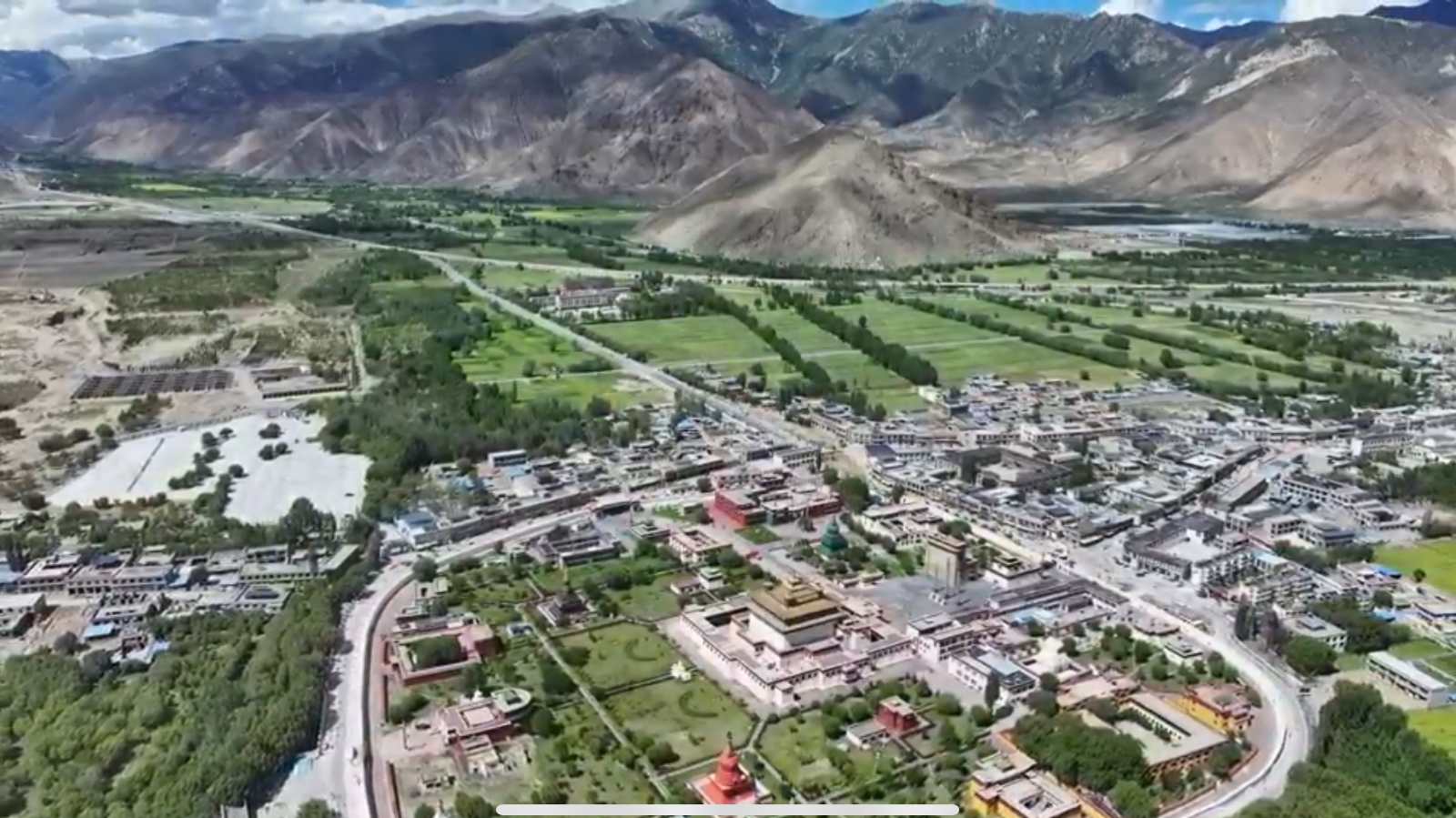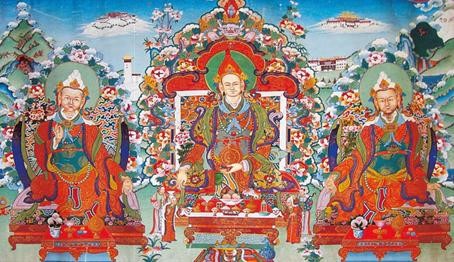The Preface to the Vajra Bridge of Great Perfection

Homage to the Master!
Dzogchen is a Buddhist teaching that emphasizes luminous emptiness. What is described as Buddha-nature or Tathāgatagarbha in the exoteric traditions, and the wisdom or luminous vajra essence of the fourth empowerment in the tantras, are different names describing Buddha's wisdom.
The Dzogchen tantras state: There are two types of Buddhist teachings - those that use conceptual mind as the path, and those that use wisdom as the path. The methods using conceptual mind involve practices through conceptual thinking, such as reciting sutras, prostrating, visualization, mantra recitation, and the generation and completion stages including channels, winds, drops and union practices. From the Dzogchen perspective, these are skillful means working with conceptual mind, using afflictions to remedy afflictions and habitual tendencies. These can all be called preliminary practices of Dzogchen and are common methods from the Dzogchen view.
The methods using wisdom as the path directly point to one's true nature, reveal naked awareness, and maintain natural wisdom awakening. This is the supreme method that fully displays the unobscured wisdom of all Buddhas.
It is called Dzogchen (Great Perfection) because it completely encompasses the essential meaning of all vehicles - the Śrāvaka, Pratyekabuddha, Bodhisattva and Vajrayāna paths.
The Vajra Bridge lineage was transmitted by Maitreya Bodhisattva, one of the eight great bodhisattvas and a disciple of our teacher Shakyamuni Buddha. In the Dzogchen tantras, Maitreya's secret name is Vajra of Great Joy, and the Vajra Bridge method is the practical path of Dzogchen that he transmitted. The term "Vajra Bridge" has been interpreted differently in different eras, somewhat distinct from the commonly known "Dharmadhātu Vajra Bridge" - here it refers to the oral transmission Vajra Bridge.
The Dzogchen Vajra Bridge is like a vajra bridge that combines the three categories of Mind Section, Space Section and Pith Instruction Section of Dzogchen, compiled by the Kadampa ancestor Master Kadam Desha, commonly known as the Vajra Bridge tradition, Aro Dzogchen tradition or Kadam oral transmission. Whether common, uncommon, secret or most secret practical instructions, they all take Guru Yoga as the foundation. Moreover, all the preliminary practices, main practices and the essence of all nine vehicles' stages take guru's blessings as the lifeline of practice. Therefore, the preliminary practice liturgy composed by Rinchen Tsewang Norbu titled "The Essential Method of Great Benefit that Transforms All Profound Paths into Practice through the Supreme Overall Practice of Vajra Guru Yoga - Descending Essence of Supreme Common Accomplishment" is especially important.
Jamgon Kongtrul Rinpoche once said: "When practicing the profound methods of the Great Treasure, Rinchen Tsewang Norbu's mind treasure Guru Yoga is one of the essential practices." This is because Guru Yoga is fundamental to the Mind Section, Space Section and Pith Instruction Section of Dzogchen, especially for practicing the Mind and Space Sections which rely on this liturgy.
Additionally, in the "Biography of Lord Atisha - Journey to the Sources of Dharma" written by Dromtonpa, it mentions: "At that time, after reviewing some treatises written by Tibetan masters, [Atisha] was not particularly pleased with others, but uniquely praised the 'Mahāyāna Yoga Shastra' (General Entry to Mahāyāna) by the Aro yogi (Aro Yeshe Jungne) for its beautiful prose, detailed cause and effect, and profound vast meaning."
The main characteristics of the profound teachings are summarized in four dharmas: turning the mind toward dharma, making dharma the path, dissolving confusion on the path, and transforming illusion into wisdom. Later, many masters adopted similar views and wrote numerous renowned treatises, such as Gampopa's "Ornament of Liberation" and "Precious Teaching of the Four Dharmas," Longchenpa's "Precious Garland of the Four Dharmas," Kadam Shakya Dorje's "Seven Points of Mind Training" etc. Similarly, Rinchen Tsewang Norbu integrated the paths traveled, being traveled, and to be traveled by all buddhas and bodhisattvas of the three times into these four dharmas, composing this supreme preliminary practice liturgy. Currently, there are two lineages of this liturgy: one is the oral transmission lineage passed down through the Great Treasure; the other is the uncommon explanatory transmission, which usually needs to be taught alongside Rinchen Tsewang Norbu's own outline "Garland of Lotus" and the "Oral Transmission Notes" written by his main disciple Dala Tenzin Dorje.
Finally, as stated in the "Vidyādhara Aspiration Prayer": "For all followers upholding the dharma of my lineage, throughout whatever time they exist, may all buddhas and ocean of vidyādharas grant their blessings, so they may swiftly attain the state of great enlightenment." May all those who connect with this teaching receive the blessings of the guru, Three Jewels and lineage masters, enter the unsurpassed path of liberation, take up the Buddha's family work, benefit self and others extensively, and swiftly attain the Universal Youth Vase Body of Dzogchen!
Written by Pema Wangching, one who bears the name of Kadam Rinchen Norbu but is actually ablaze with the five poisons, on the tenth day of the tenth month of the Wood Sheep year (11/21/2015). May it be auspicious!


